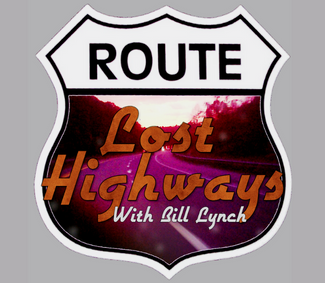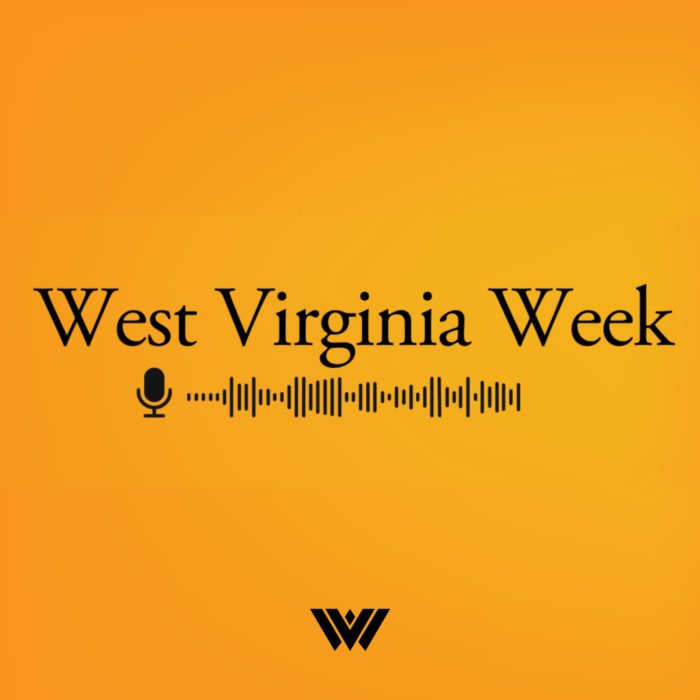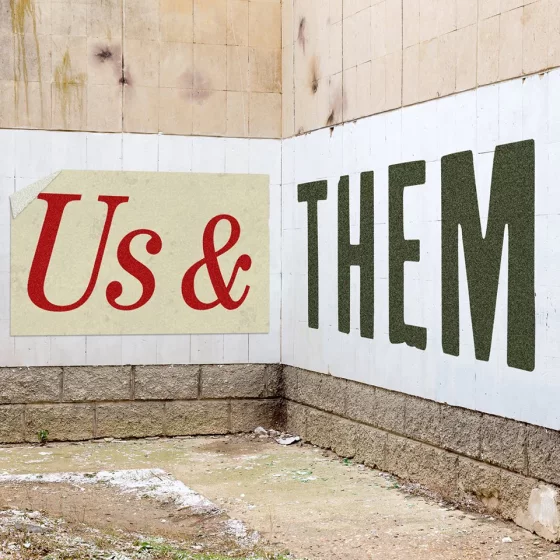Colton Copley and Greg Williams are cousins and eighth graders at Williamson PK8 School in Mingo County. When the rain started, they were hopeful. Recalling it, they spoke overtop of each other in their excitement.
“At first it was like, I wanted it to flood,” said Greg. “I know, right?” chimed in Colton.
The idea was, if it flooded “a little bit,” Colton said, they would get out of school. I want it to flood a little bit so we get out of school. “Yeah, I swear that’s how it was.”
The teens couldn’t have known how badly Mingo County was going to flood. Three people died and close to a hundred lost their homes or businesses.
They credit the flood walls with saving the town. “Because, bro, if we didn’t have the, if we didn’t have the flood walls, I don’t think Williamson would be here, y’know?” Colton said.
“I swear that’s right,” added Greg. “Them and Baby T.”
The boys’ faces light up. “We love you Baby T!” the boys shout together.
Baby T is Tara Sexton, an online content creator and fixture of local culture. The boys feel she saved their spirts on dark days with her positive attitude messages post-flood. Because there were several dark days.
Greg rode out the storm at his dad’s house, which sits atop a hill.
“We was good, but, there’s a creek or something down in the bottom, and it came up. So we was kind of stuck, but my mom, she lost her house because she lives closer to the bottom, so like when it came up, it swept all her house out.”
Colton’s family home was spared. Several days a week over the next month, he helped dig mud out of people’s homes.
“There was this one woman down in Fairview. She was an 80-something year old woman, and nobody had helped her. So our whole football team went down there, and we helped dig mud out of her garage and out of her house.”
The going was rough, Colton remembers. “It smelled terrible. I just wanted at that point, I just wanted to go home, but I had to stay and help the community, to be the bigger person. Because I know it’s the right thing to do.” And because, the boys say, they got positive attitude adjustments online from Baby T.
The football team was part of a massive outpouring of community spirit from staff and students. But those who endured the floods, and especially those who volunteered after, are left now dealing with the trauma of what they saw, heard, and smelled.
Students are getting help from their school. Williamson PK8 School hosts a mental and physical health clinic in partnership with a federally qualified health center, or FQHC called Williamson Health and Wellness. FQHCs are a lifeline in rural communities where health care access is limited, and some people lack the ability to pay for services. Kimberlee Richardson is a licensed counselor at the clinic embedded in the school. When Williamson PK8 shut down because of the flooding, her boss directed all the health clinic employees to remain available to the community.
“Durand Warren is his name. And he said, ‘We are the behavioral health clinic. We got to provide support for the community.’ Everybody was just ‘take care of the community. Take care of the community.’”
Richardson started working with local shelters and supply centers. They would call her if someone wanted to talk. She would show up, reassure them of safety, and listen until they had what they wanted to say off their chest.
Each time she went to one of the supply centers or temporary shelters, Richardson saw staff and students volunteering. Sitting between cots, reading books to kids. Trying to find toys, shoes, the right size of clothing among the donations.
“They did what they were told and they hadn’t had any sleep none of us had, but they were down there every day, just trying to spread a little joy back into the lives of these people who lost so much,” Richardson says. “I saw them with muck on their shoes from helping people out of mud. They went out on boats to find people those first nights. They did everything without complaining. They were just, so beautiful to see in action.”
Schools were closed about a month. When the reopened, Richardson met with staff from the school and the clinic to plan “a soft opening.”
They wanted to do something fun and welcoming, so the staff dressed up as Dr. Seuss characters. They held a school-wide assembly on the themes of Hope and Love, with large groups of kids spelling out the words in lines (think half time football show) which the rest could read from the bleachers. And then the kids broke into small groups with their teachers and support staff.
“They asked each child to say something they loved about theirself,” Richardson said. Her voice got briefly shaky. “Just things that would help them remember, they were strong and we were all getting through this together.”
As days turned to weeks after the storms, Richardson kept the de-escalation room available. It’s a place with calm colors and a flat screen TV broadcasting tropical fish swimming, stocked with toys that help kids express feelings. There are sound muffling chairs for the overstimulated, and a private booth for those who need to talk.
Richardson’s eyes mist again, as she describes how the students treated each other—partly because she’s proud of them looking after each other, and partly because of the maturity the displayed toward each others’ traumatic experiences.
“Normally the kids come through and they run in here of a morning and say ‘Hey Miss Kimmie.’ And I love that. But after we opened, they were really careful to see who was in here and be respectful and mindful of their needs. If the students knew someone was in here that was having a hard time from the flood, it was just like a unanimous thing of, like, we’re giving them space. That was beautiful to me.”
Richardson says kids who experienced the floods may not share their anxiety unless asked. She offers this advice to those talking to children:
“First, just listen. Just let’s just listen. They may be worried. They may express fear and anxiety due to weather they’ve never had before. They may have, you know, a child that never worried about losing things, that saw their friend lose things may start panicking when it rains. We don’t know what they took away from that flood. You may be surprised with what you hear.”
Richardson heard students repeatedly expressing a particular anxiety: how the flood affected family finances. Federal Emergency Management Agency, or FEMA, funding—was and still is on everyone’s mind.
The school’s vice principal, Ralph Pyskowski, says finances and FEMA money (Federal Emergency Management Association funding) were on everyone’s minds after the flood—and still are.
“It’s hard to rebound from when you lost everything,” Pyskowski says, clasping his hands on his knees. “We just kind of heard from word of mouth in the community that people were wondering, they were afraid, are they going to get any help from the government?”
West Virginia was not as quick as Kentucky to get disaster status and draw in federal funds. People were stressed.
“I know a family that they reported they lost over $250,000 worth of, you know, personal items in their business. And we’re, ‘How can you rebound from that?’ “ Pyskowski shakes his head.
The school offered two levels of FEMA assistance: using social media and parental communication to make sure the community knew it was available, and sitting down with parents who asked for help to fill in forms.
“Because we know not everybody has Internet access, maybe not everybody knows what to do. So if they asked, we were ready. I was really proud of the teachers here, and the clinic staff, and all the teachers in all the schools because it was a county-wide effort, to get everyone the help they needed.”
Greg Williams’ mother has a place to stay for now because of FEMA.
“My mom, she got a nice camper, because she got that money,” he says. “I’m thankful for that.” Also for a local mom at the school who rounded up a new wardrobe for her. “She didn’t have to do that, but she did.”
But the depths of loss from the flood is not lost on these eighth graders.
Greg continues, “My aunt Polly, it flooded her house. They had to get buckets. It was bad. It was just bad. It was sad for a lot of people. Some of the people worked all the way up, just to lose everything and they had to start again from the bottom.”
It will be a long hard slog. But Greg, Colton, and the rest of the students, staff, and parents at Williamson PK8 and its Williamson Health and Wellness Clinic partner will continue to support each other as they all deal with the flood’s impact on their lives.






















